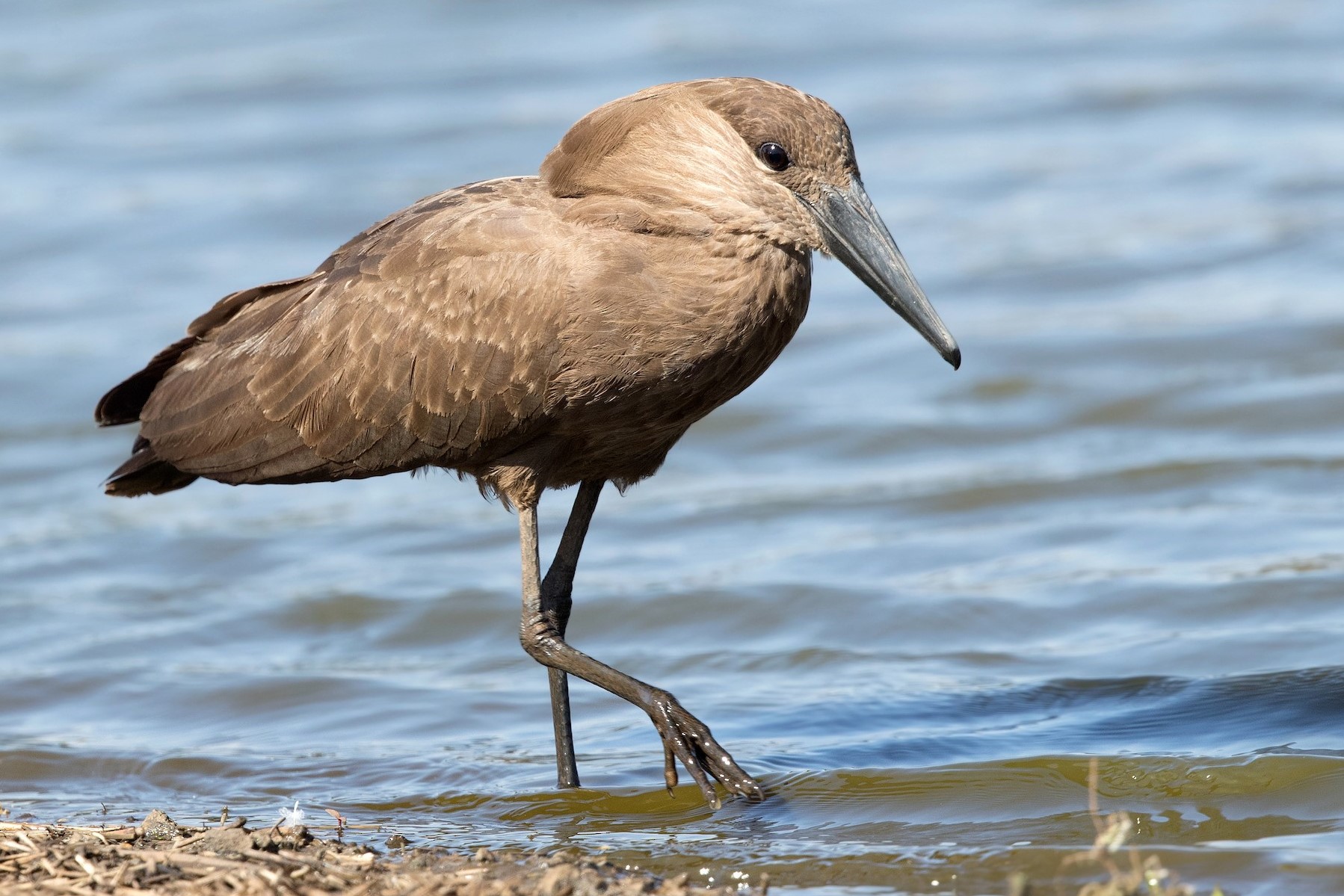The Hamerkop: Uganda’s Remarkable Avian Architect
The Hamerkop (Scopus umbretta). Uganda is a country blessed with an incredible diversity of wildlife, and its avian residents are no exception. Among the numerous bird species that call this East African nation home, the Hamerkop (Scopus umbretta) stands out as a remarkable and fascinating creature. This bird’s distinctive appearance, behavior, and architectural skills have earned it a special place in Uganda’s rich natural tapestry.
Physical Features and Habitat:
The Hamerkop is a medium-sized wading bird with a striking appearance. It boasts a long, sturdy beak, prominent crest, and distinctive plumage. Its plumage is predominantly brown, and its eyes are encircled by strikingly red skin. These birds typically reach a height of around 56 centimeters and exhibit a wingspan of approximately 90 centimeters.
Hamerkops can be found throughout Uganda, particularly in wetland habitats, marshes, and riversides. They are highly adaptable and have adapted to a wide range of aquatic environments, making them a common sight in various parts of the country.
Behavior and Feeding Habits – The Hamerkop (Scopus umbretta)
The Hamerkop is renowned for its unique and skillful hunting techniques. These birds are known to have a diverse diet, which includes fish, amphibians, insects, and small mammals. What makes them particularly intriguing is their habit of creating and using tools in their feeding. They have been observed using twigs, leaves, and even their own bodies to lure fish closer to the surface, where they can swiftly snatch their prey.
Hamerkops are diurnal birds, meaning they are active during the day. They have a characteristic slow, deliberate flight and often forage along the edges of water bodies, where they can easily spot their prey.
Architectural Marvels:
One of the most captivating aspects of Hamerkops is their architectural prowess. These birds are known for their enormous and intricate nests, which can resemble small fortresses. The nests, constructed primarily from sticks and other plant materials, are often large enough to accommodate a small human.
Hamerkop nests are usually built in the branches of trees or bushes, close to water bodies. What’s remarkable is that they are not solely used for breeding. Hamerkops use their nests as a communal residence, often maintaining and expanding them over several generations. These nests are so sturdy that they can endure for many years, even through harsh weather conditions.
Conservation Status:
In Uganda, the Hamerkop is not considered a threatened species. Nevertheless, it is essential to protect the wetland habitats where these birds thrive. Wetlands in Uganda are vital ecosystems that support various wildlife, and their preservation is critical to ensure the continued survival of species like the Hamerkop.
Remarks – The Hamerkop (Scopus umbretta)
In conclusion, the Hamerkop is a captivating and unique bird species that adds to the biodiversity of Uganda’s remarkable natural landscapes. Its distinctive appearance, remarkable foraging techniques, and architectural skills make it a bird worth celebrating and protecting. Uganda’s commitment to conserving its diverse wildlife, including the Hamerkop, is essential for future generations to continue enjoying the wonders of this avian architect.








